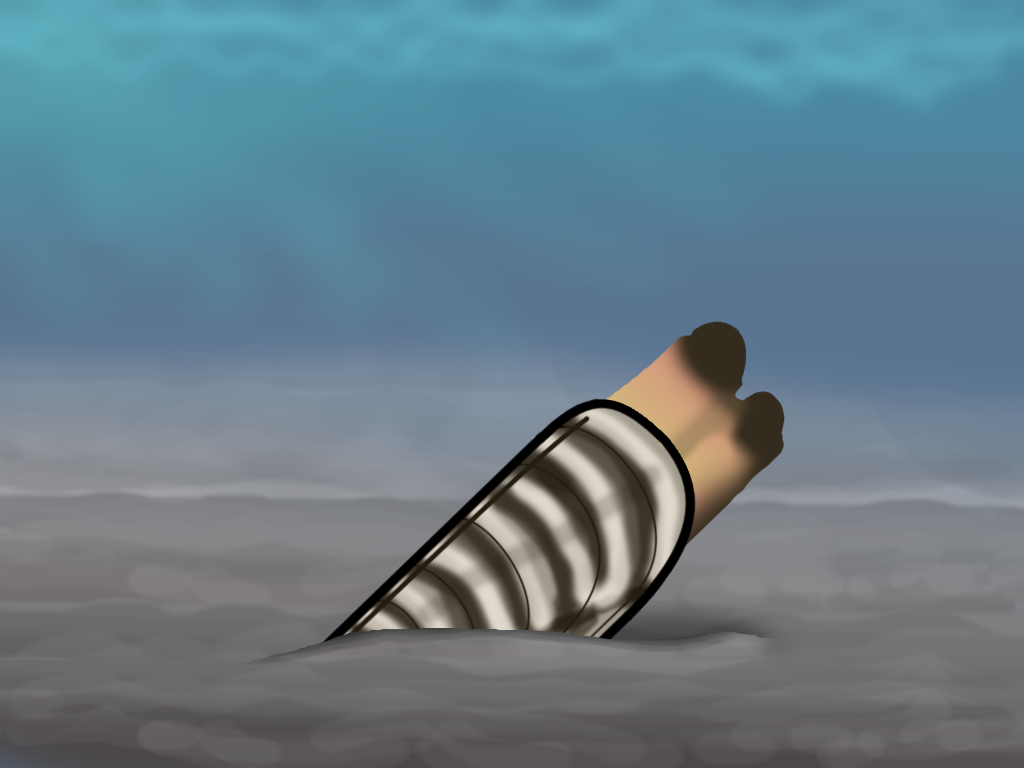
Bivalvia is the group that includes clams, mussels, oysters, and scallops. They are still enormously successful today, living in both salt and fresh water. Bivalves are mollusks, like cephalopods, gastropods, scaphopods, and chitons. While not as common as brachiopods at Seven Stars, they are not too hard to find.
Bivalves found at Seven Stars
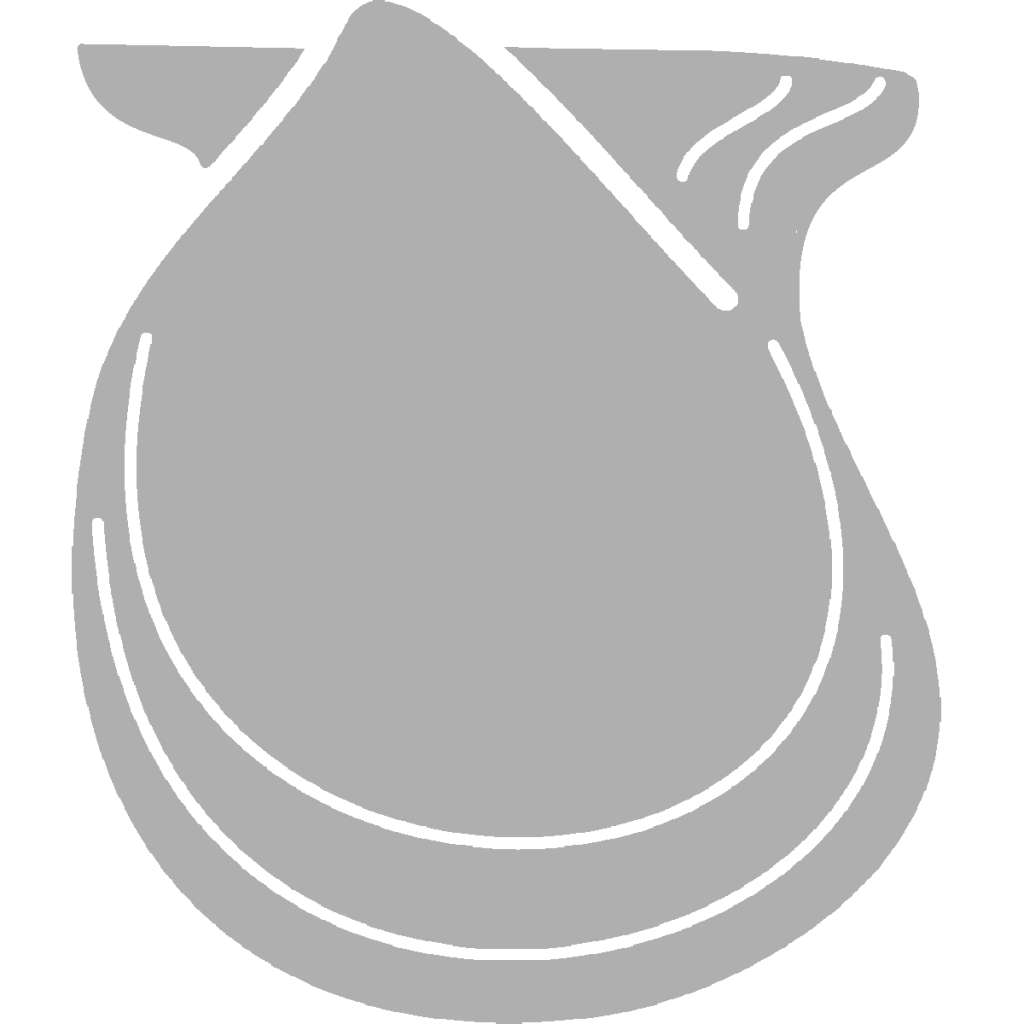
Actinodesma erectum
UNCOMMON
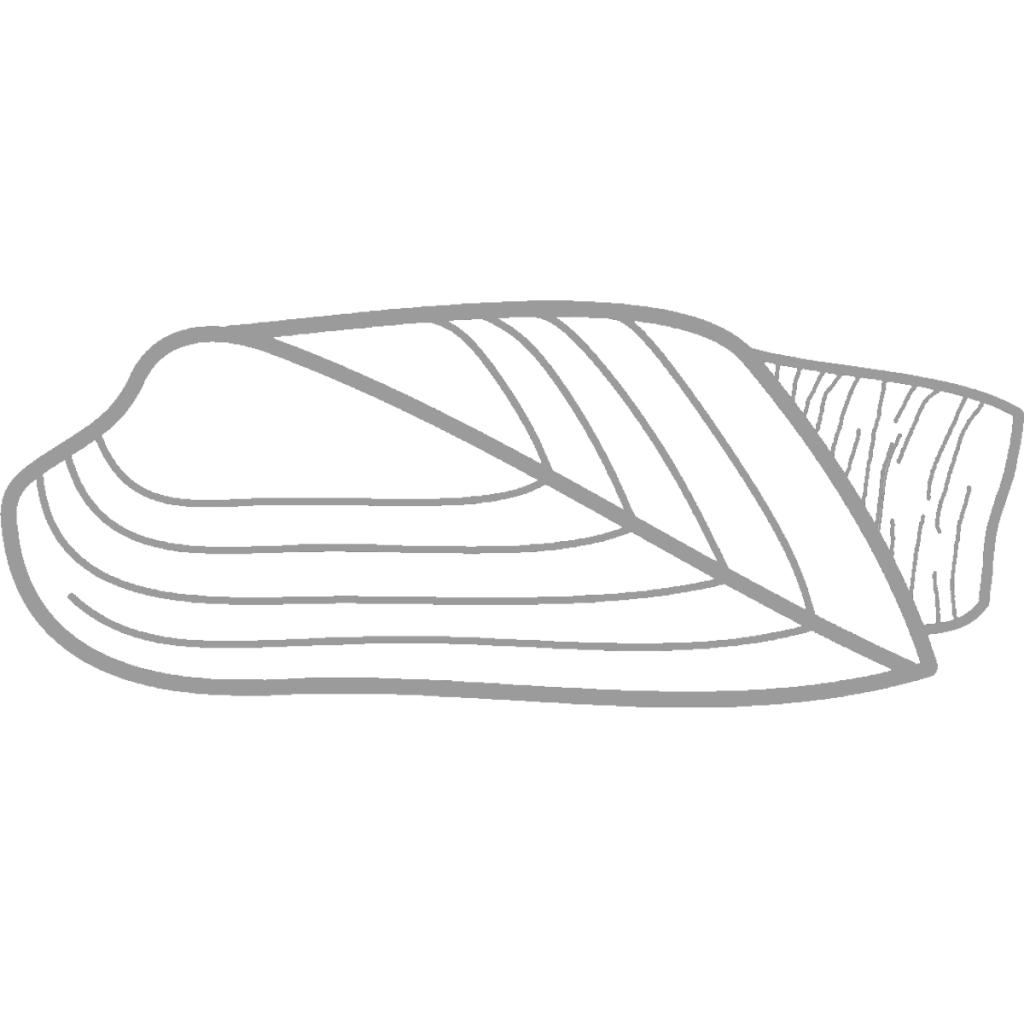
Goniophora hemiltonensis
COMMON
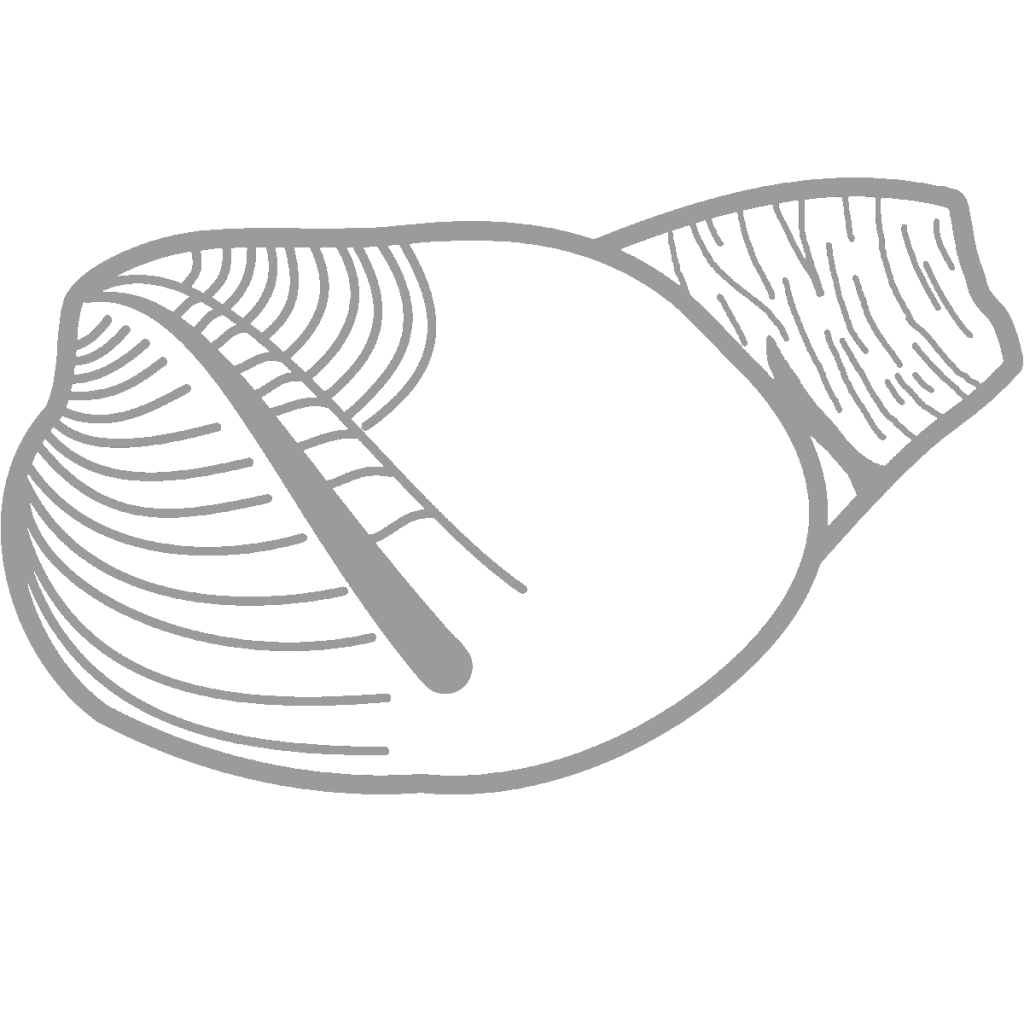
Grammysia bisculcata
UNCOMMON

Grammysioidea alveata
UNCOMMON
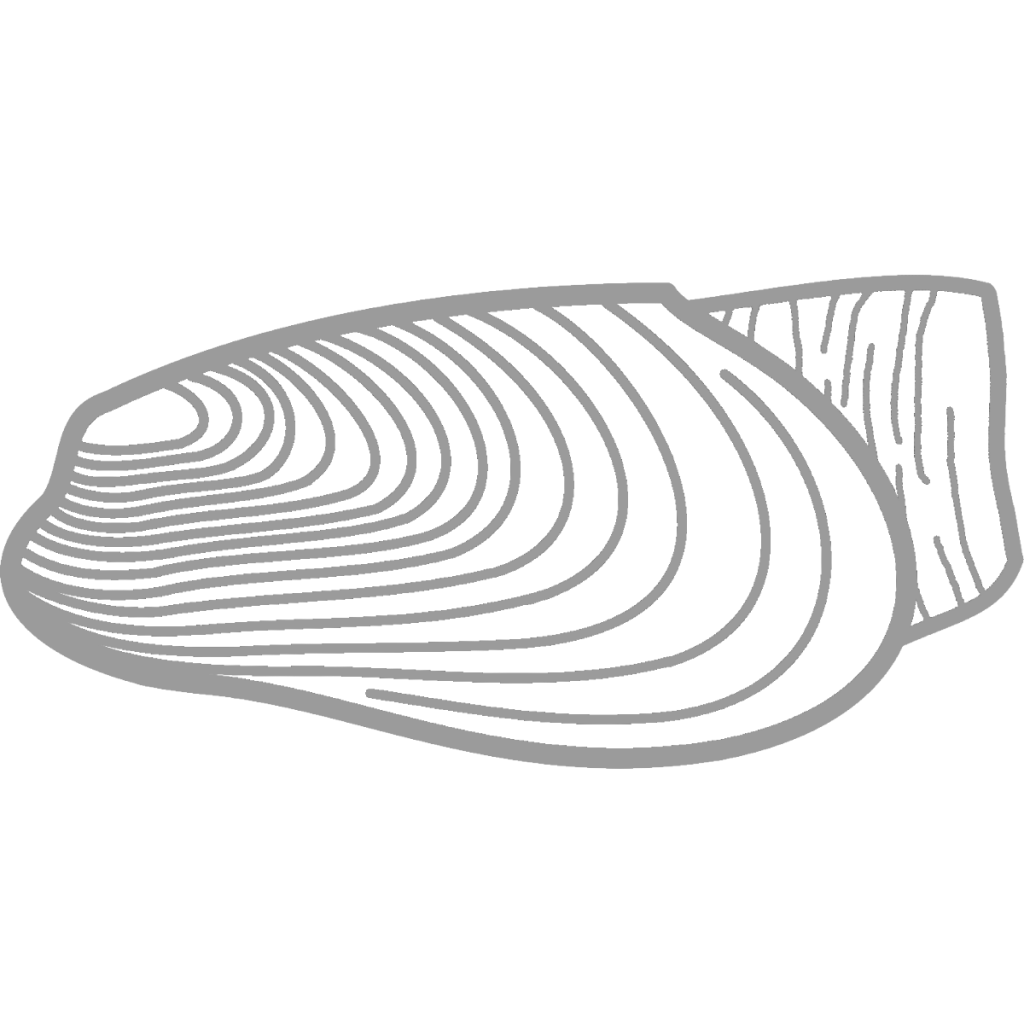
Modiomorpha concentrica
RARE
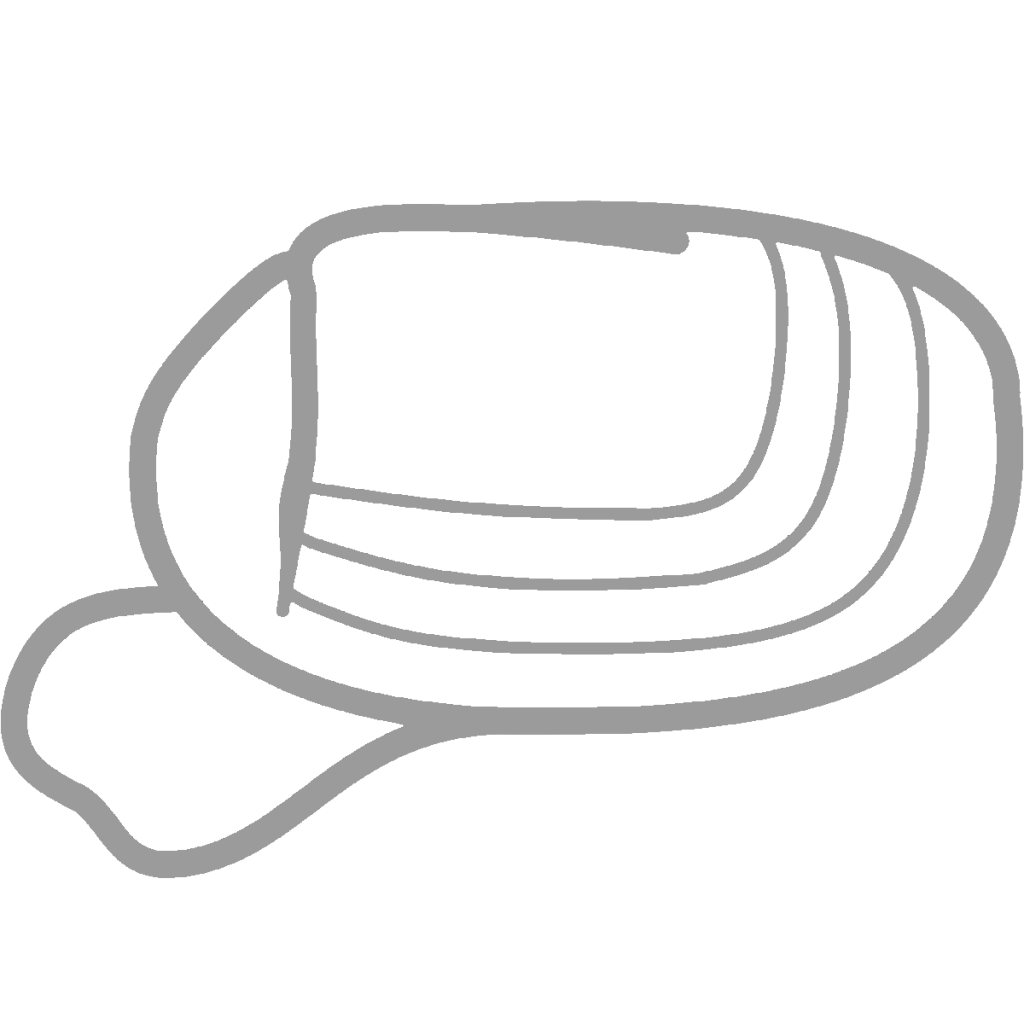
Nuculoidea oblongatus
UNCOMMON

Nuculoidea triqueter
RARE
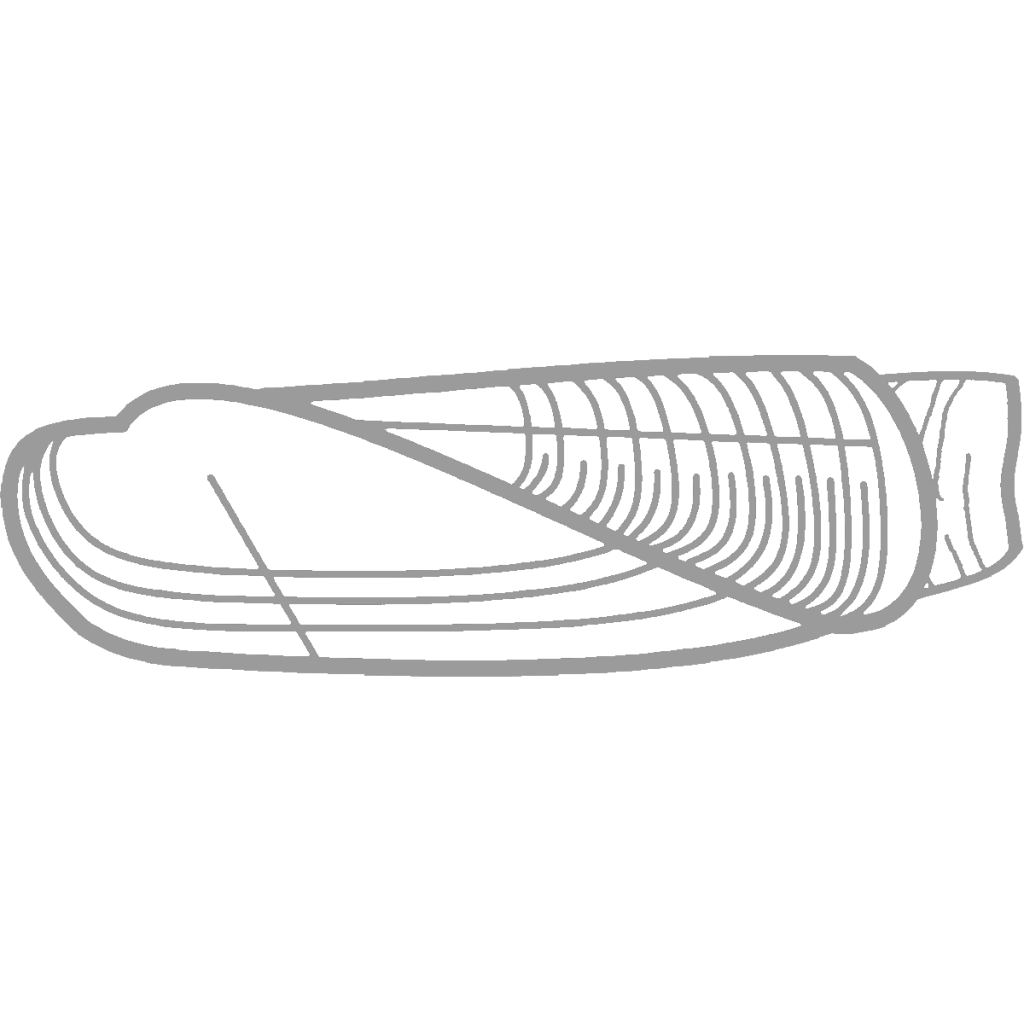
Orthonota undulata
VERY COMMON
How do I identify Bivalves?
New fossil hunters often confuse Bivalves with Brachiopods, but once you known the difference it is easy to tell. Like gastropods and cephalopods, Bivalves are mollusks, and have two valves exactly the same shape – but each valve is itself asymmetrical. On the other hand, Brachiopods have two valves that are different shapes – a dorsal and a pedical valve. Each valve is symmetrical (1, 3).
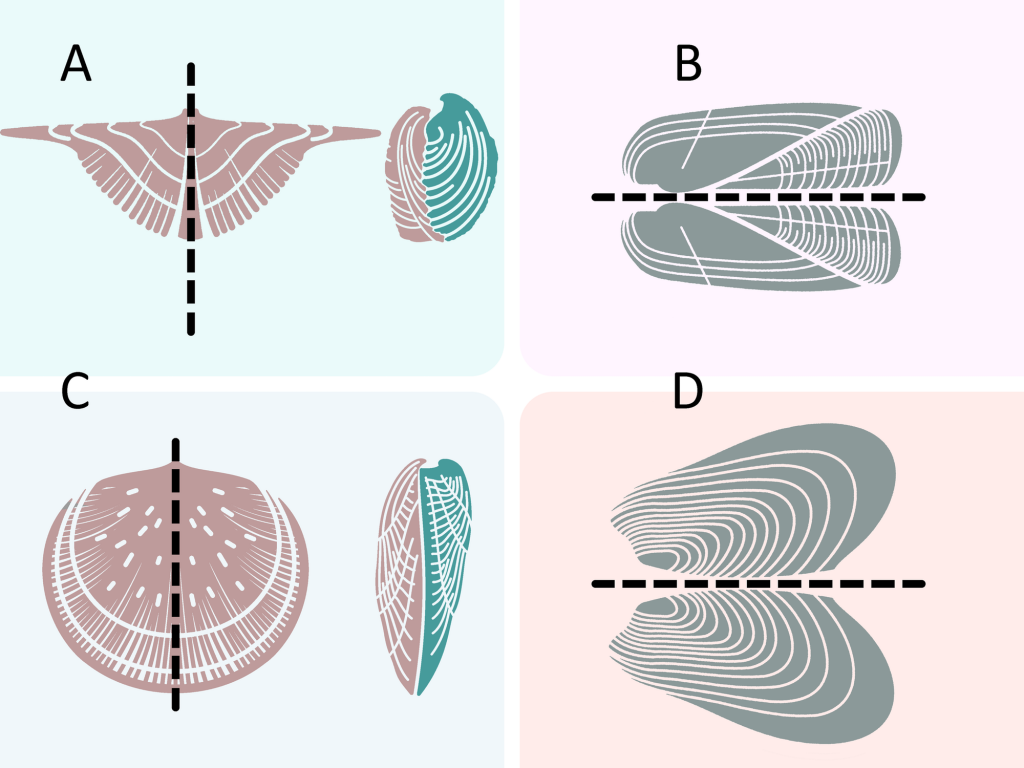
Top Left: Mucrospirifer mucronatus.
Bottom Left: Rhipidomella penelope.
Top right: Orthonota undulata.
Bottom Right: Modiomorpha concentrica.
What were Bivalves?
Bivalves were mollusks that are still alive today, with roughly 8,000 species living in both salt and fresh water (3). They were competitors of the Brachiopods, but after the Permian Extinction when many Brachiopods went extinct, they took over. As mollusks, they had a mantle, a mantle cavity, and a shell. The mantle was a layer of versatile tissue that grew the shell of the Bivalve and composed the siphon. The mantle cavity was a chamber that housed the gills and anus. A tube formed by the mantle at the posterior end of the animal, called the siphon, pulled water in and out of the mantle cavity. In some Bivalves this was divided into two tubes, the incurrent and the excurrent. Water would be pulled into the mantle chamber by the incurrent siphon, food and oxygen was extracted from it by the labial palps and gills, and was pushed out through the excurrent siphon (2).
Bivalves have a shell separated into two valves (hence the name Bivalve) on either side of the body. This shell is used for protection and can help some Bivalves (specifically scallops) swim by opening and closing the two valves. It is also used when burrowing, to push sand and mud out of the way (2). Bivalves close their valves by contracting adductor muscles, like in Brachiopods. However, instead of using another set of muscles to open the shell, Bivalves use an elastic ligament once the adductor muscles are relaxed (3).
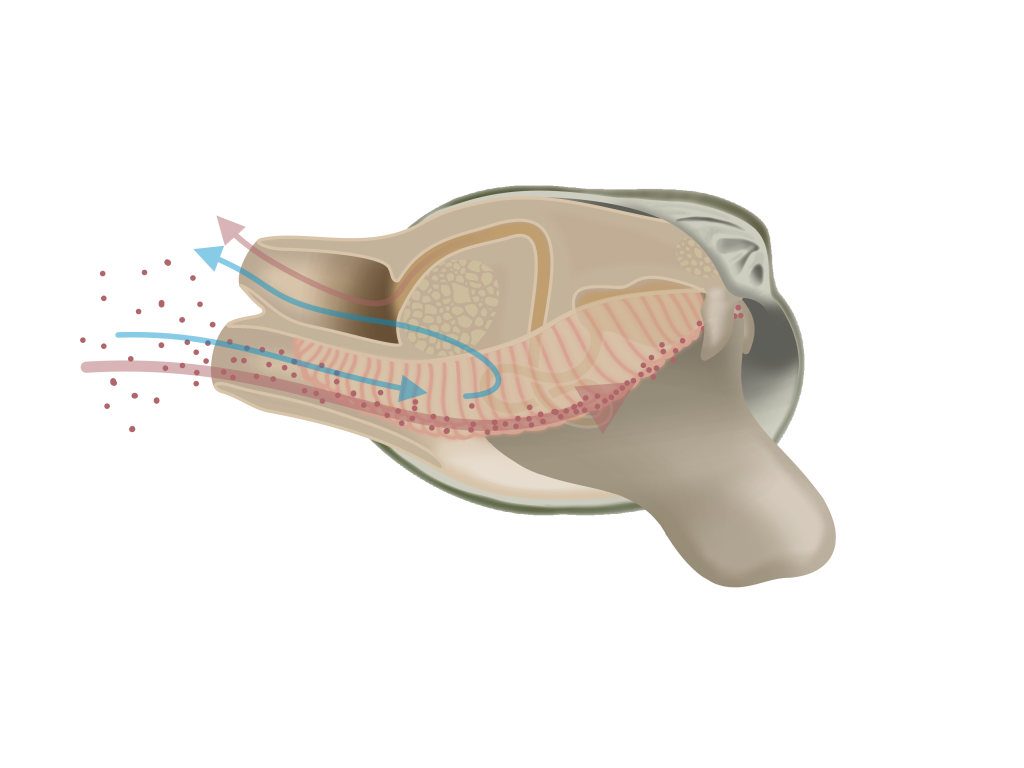
The mantle has three layers. The outer layer secretes the shell, the middle layer is used for sensory purposes, and the muscular inner layer helps the Bivalve move. Since they have no head like all other mollusks do, some Bivalves have eyes in the middle layer of their mantle (2).
Many Bivalves, especially burrowing ones, have a muscular foot that enables it to dig into mud or sand. After pushing into the sea floor, the foot contracts, pulling the Bivalve into a burrow (4), and the valves push out to make more room. Orthonota, the most common Bivalve at Seven Stars, likely burrowed like its modern relatives, its shell shape suggesting it did so especially deep (2). On the other hand, Nuculoidea was a shallow burrower that hid just under the surface.
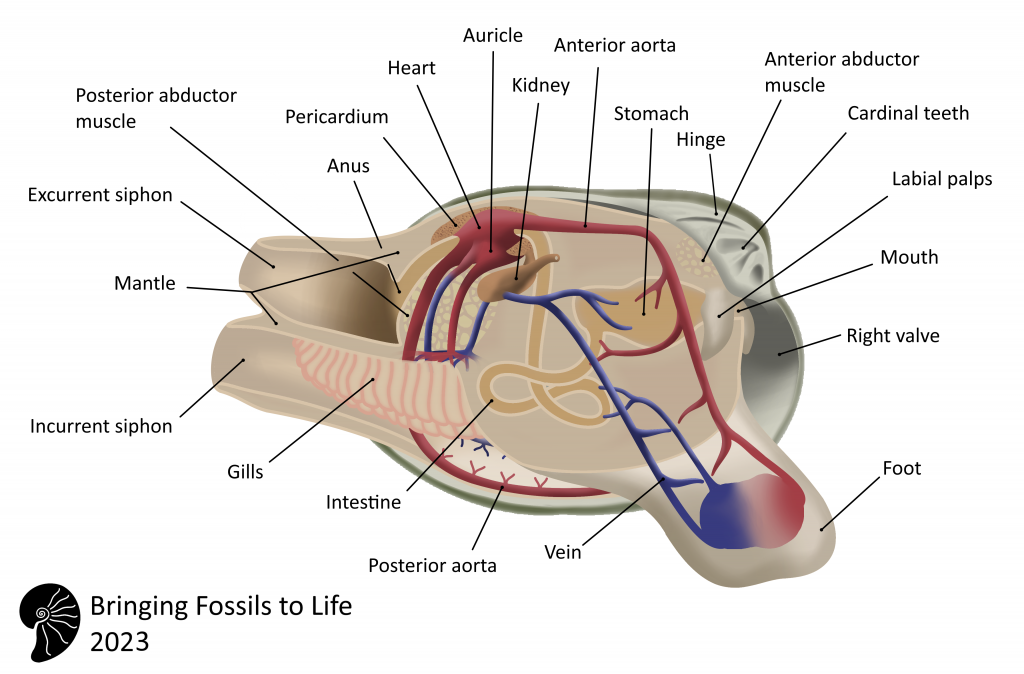
Bivalves at Seven Stars
Seven Stars is known for its diversity of Bivalves, which is higher than at other Mahantango sites. Bivalves would have been common infaunal filter feeders.
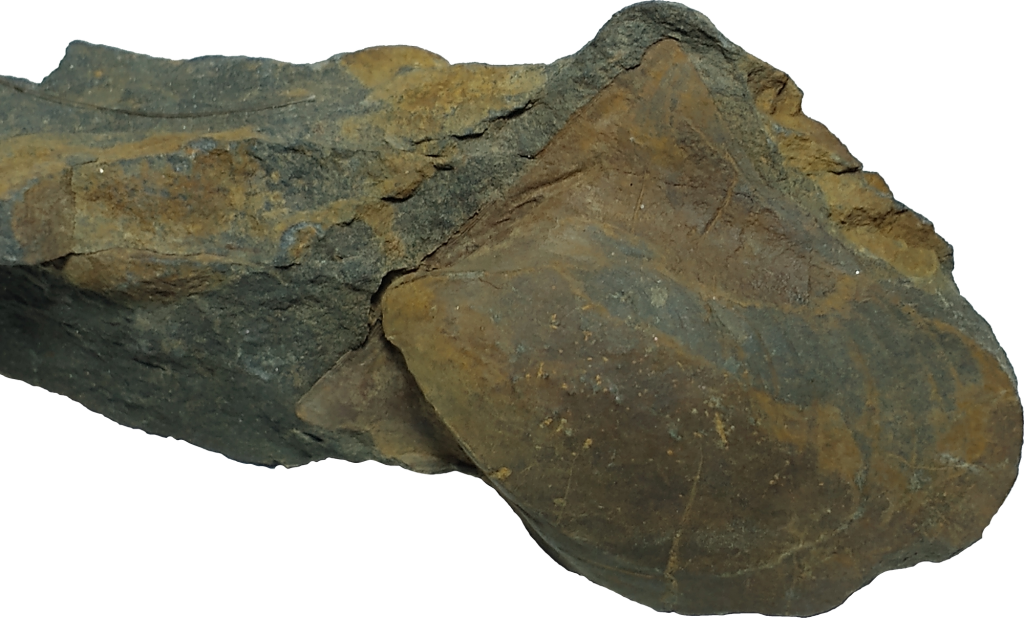
Actinodesma erectum
Actinodesma can grow very large (size of an adult hand) at Seven Stars. Often the wings on the edges crack off of internal molds and only the main shell’s impression is left.
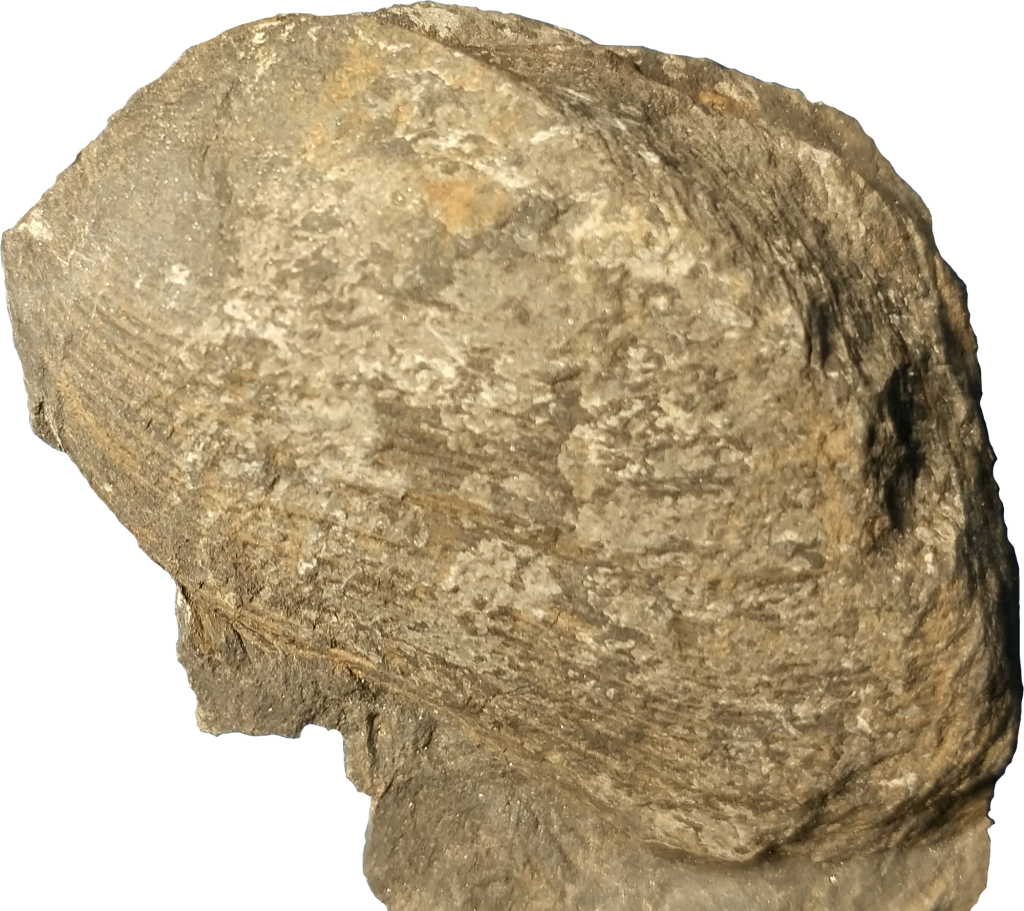
Goniophora hemiltonensis
Goniophora can also grow to a large size. It is often found with both valves still together, and crushed along the large ridge. It is long and angular, sometimes being found crushed.
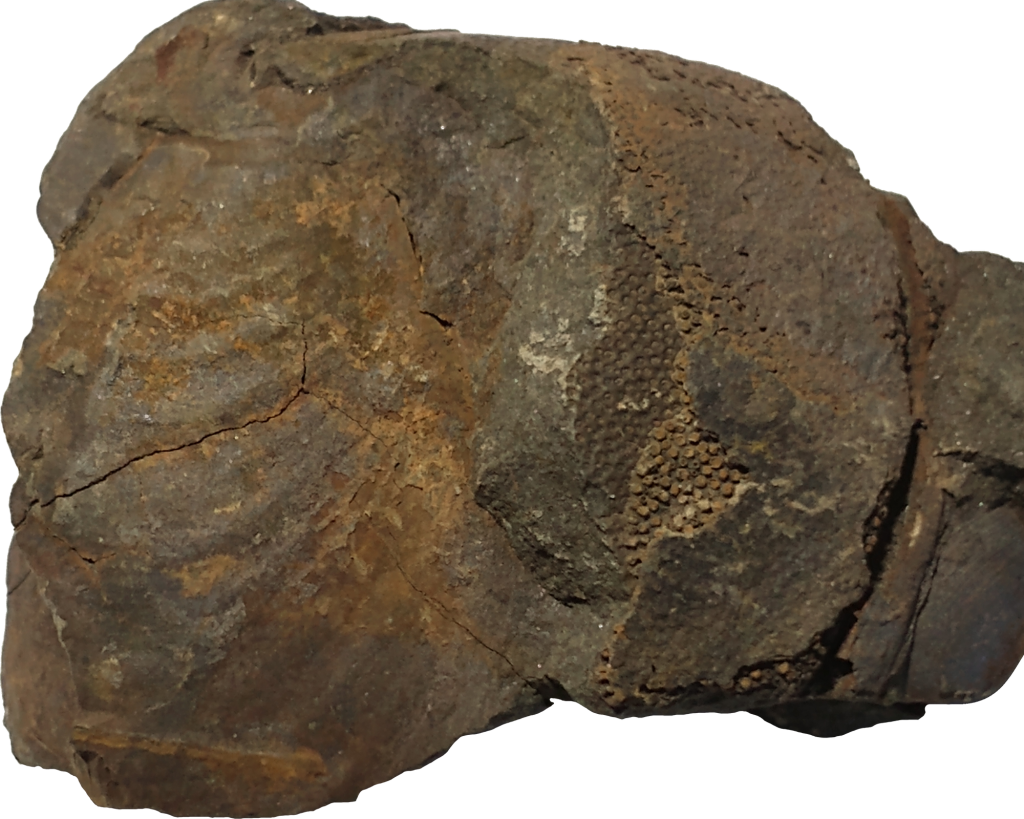
Grammysia bisculcata
Grammysia is a smaller bivalve that lived not far below the surface of the seafloor. It can be confused with Grammysioidea but does not grow as large, has weaker growth lines, and has a fold and furrow that runs from the beak. Note the Dipleura dekayi pygidium that is also in the specimen to the right.
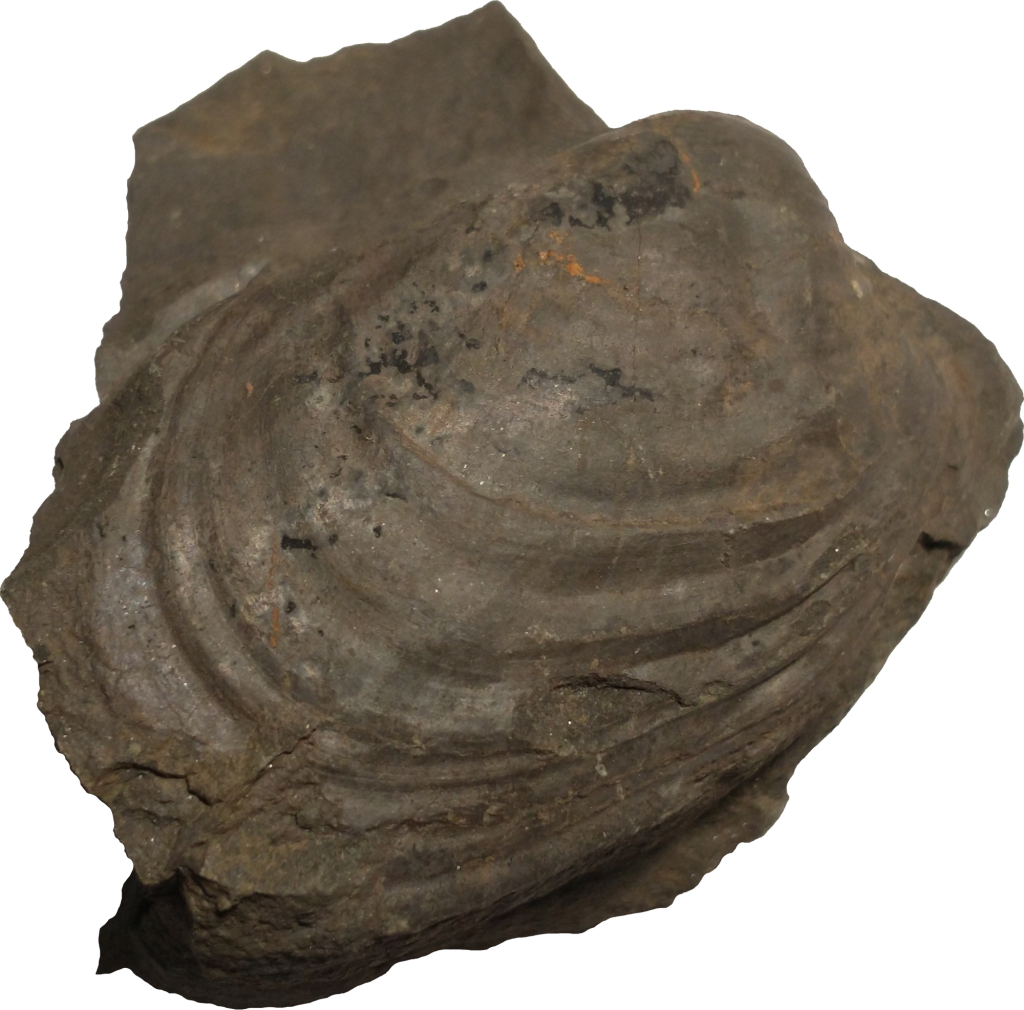
Grammysioidea alveata
Grammysioidea can grow larger than Grammysia, has stronger growth lines, and lacks the fold and furrow down the center of the shell.
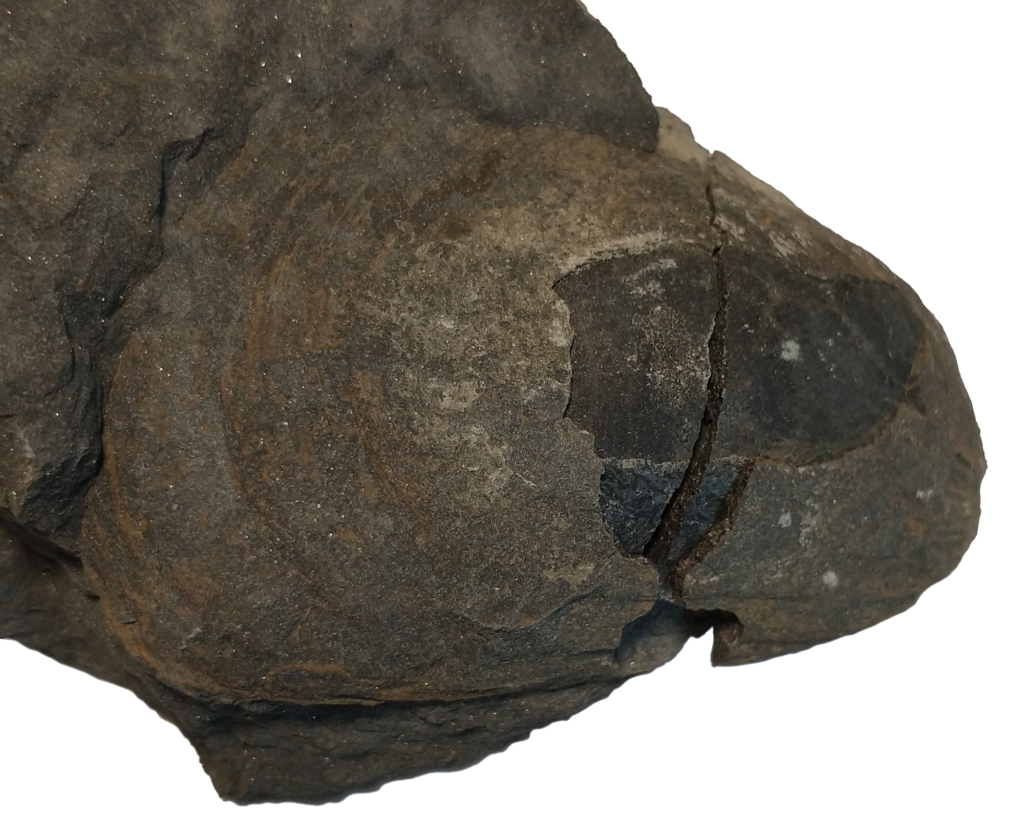
Modiomorpha concentrica
Modiomorpha is rare at Seven Stars and in general form it is like Goniophora. However, it is much more rounded, with strong striae.
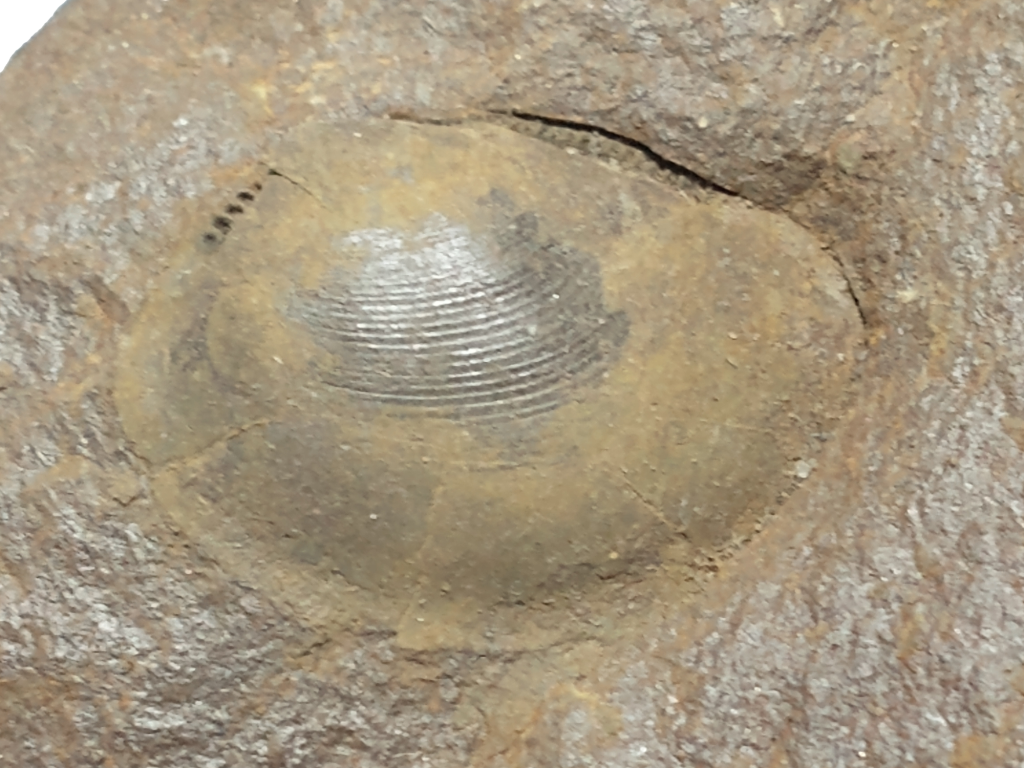
Nuculoidea oblongatus
N. oblongatus is the more common species at Seven Stars, understandably being more elongated than its sister taxon, N. triqueter. It had weak growth lines, while N. triqueter was smooth. Note the cardinal teeth on the upper edge of this specimen; these kept the two valves aligned when opening and closing them.
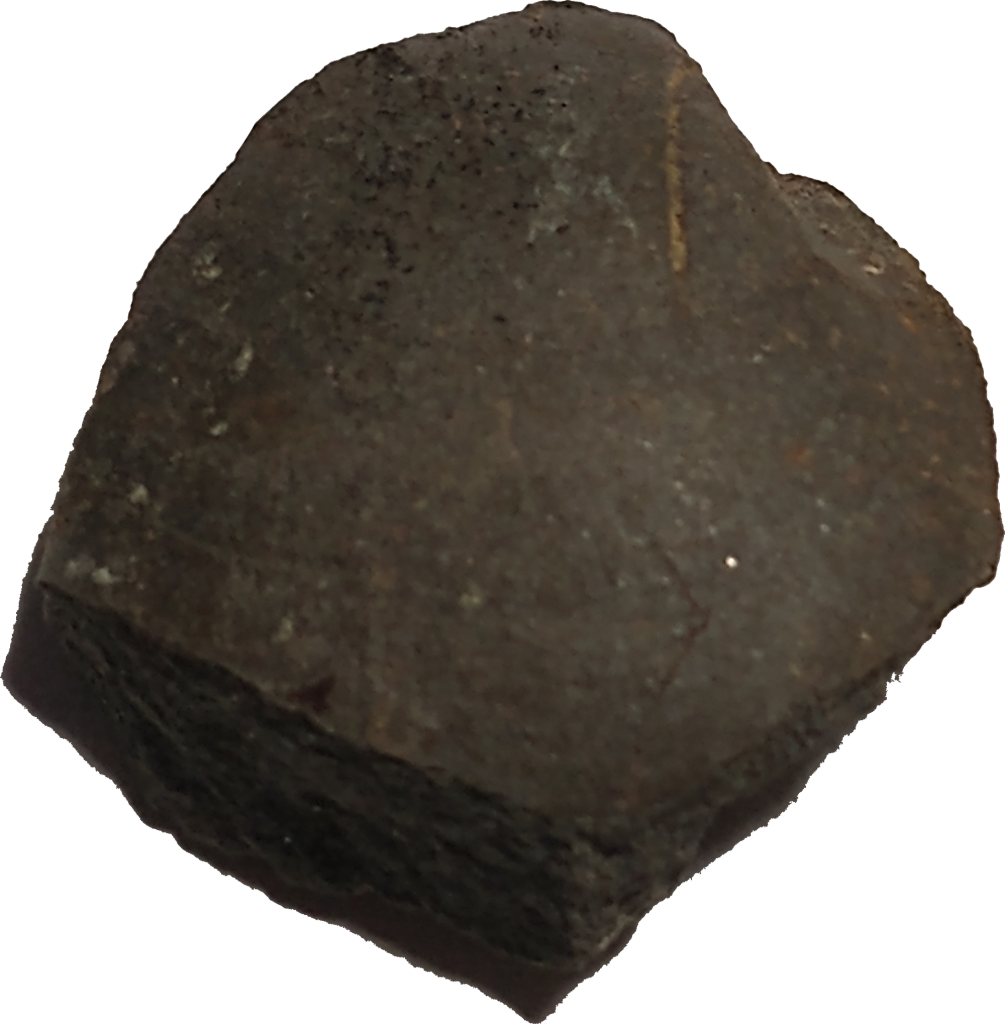
Nuculoidea triqueter
N. triqueter is rarer at Seven Stars and is more compact than N. oblongatus. Here the original shell is not preserved and the Bivalve is facing the opposite direction than the picture of N. oblongatus above.

Orthonota undulata
Orthonota is by far the most common Bivalve from Seven stars, and possibly the most common fossil here from all groups. Very elongated, it lived and appeared similarly to today’s “razor clams,” burrowing very deep and using very long siphons to connect it to the outside world. Large and often carbonized at this site, Orthonota are shiny and easy to spot. Museum quality specimens can be found here, though it is rarer to find both valves intact.
Works cited
(1) Wilson, K. A. (2014). Field guide to the Devonian fossils of New York (3rd ed.). Paleontological Research Institution.
(2) Allmon, W. D., and P. M. Mikkelsen. (2020). Bivalvia. In: The Digital Encyclopedia of Ancient Life. https://www.digitalatlasofancientlife.org/learn/mollusca/bivalvia/
(3) Taylor, Paul D. and Lewis, David N. (2005). Fossil Invertebrates. Harvard University Press. https://archive.org/details/fossilinvertebra0000tayl
(4)Mouritsen, Kim. (2002). The parasite-induced surfacing behaviour in the cockle Austrovenus stutchburyi: A test of an alternative hypothesis and identification of potential mechanisms. Parasitology. 124. 521-8. 10.1017/S0031182002001427. https://www.researchgate.net/publication/11324970_The_parasite-induced_surfacing_behaviour_in_the_cockle_Austrovenus_stutchburyi_A_test_of_an_alternative_hypothesis_and_identification_of_potential_mechanisms
